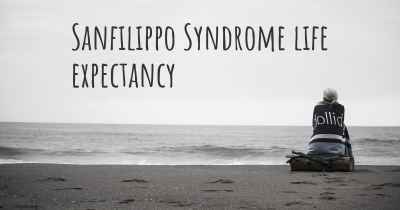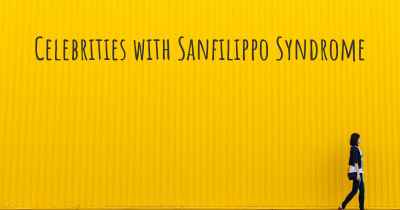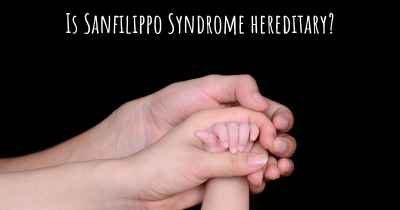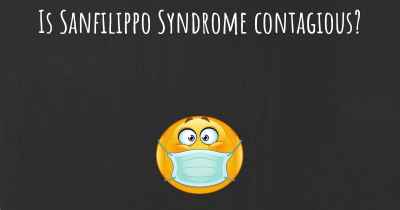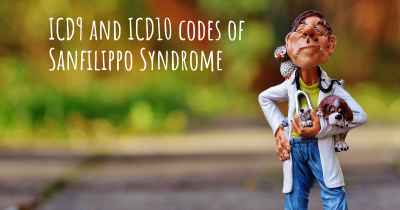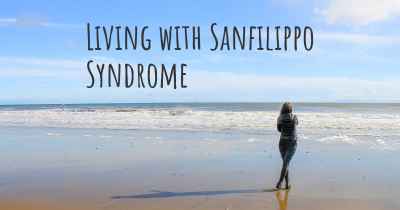Which are the symptoms of Sanfilippo Syndrome?
See the worst symptoms of affected by Sanfilippo Syndrome here
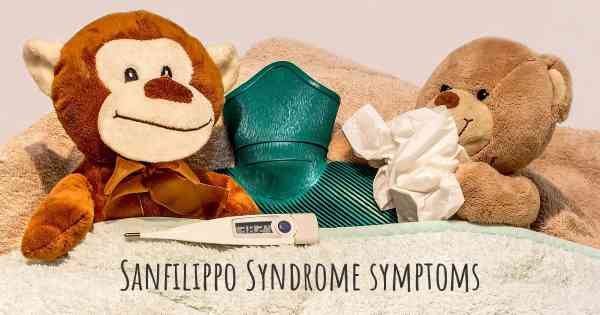
Sanfilippo Syndrome, also known as mucopolysaccharidosis type III (MPS III), is a rare genetic disorder that affects the body's ability to break down certain sugars called glycosaminoglycans (GAGs). This leads to the accumulation of these sugars in cells throughout the body, causing progressive damage to various organs and tissues.
There are four subtypes of Sanfilippo Syndrome, each caused by a different enzyme deficiency. These subtypes are referred to as MPS IIIA, MPS IIIB, MPS IIIC, and MPS IIID. Although the symptoms may vary among the subtypes, they generally share some common characteristics.
Neurological Symptoms:
One of the hallmark features of Sanfilippo Syndrome is the progressive neurological deterioration that occurs over time. Children with Sanfilippo Syndrome may initially appear normal in the first few years of life, but as the disease progresses, they start experiencing a decline in cognitive abilities and development.
Developmental Delay:
Children with Sanfilippo Syndrome often experience developmental delay, including delayed speech and motor skills. They may have difficulty reaching developmental milestones such as sitting, crawling, and walking. As the disease progresses, they may lose previously acquired skills.
Behavioral Changes:
Another prominent symptom of Sanfilippo Syndrome is the development of behavioral problems. Children may exhibit hyperactivity, impulsivity, and attention deficit hyperactivity disorder (ADHD)-like symptoms. They may also display aggressive behavior, sleep disturbances, and anxiety.
Speech and Communication Difficulties:
As the disease advances, children with Sanfilippo Syndrome often experience speech and communication difficulties. They may have trouble speaking clearly, forming sentences, and understanding complex language. Eventually, they may lose their ability to communicate verbally.
Physical Symptoms:
Sanfilippo Syndrome can also lead to various physical symptoms. These may include coarse facial features, enlarged liver and spleen, hernias, joint stiffness, and skeletal abnormalities. Some children may also experience seizures and vision or hearing loss.
Sleep Disturbances:
Many children with Sanfilippo Syndrome experience sleep disturbances. They may have difficulty falling asleep, staying asleep, or have abnormal sleep patterns. This can further contribute to behavioral problems and daytime fatigue.
Progressive Decline:
Over time, the symptoms of Sanfilippo Syndrome worsen, leading to a progressive decline in overall health and functioning. Children may become wheelchair-bound, lose their ability to eat independently, and require assistance with daily activities.
Life Expectancy:
Unfortunately, Sanfilippo Syndrome is a progressive and life-limiting condition. The life expectancy of individuals with Sanfilippo Syndrome varies, but most individuals do not survive beyond their teenage years or early adulthood.
It is important to note that the severity and progression of symptoms can vary among individuals with Sanfilippo Syndrome, even within the same subtype. Early diagnosis and intervention are crucial in managing the symptoms and providing appropriate support and care for affected individuals and their families.
Posted Nov 6, 2019 by TSF Inc Team Sanfilippo Foundation
Course Facial Features
ENT infections
ADHD
Hearing Loss
Diarrhea (sometimes foul smelling and changes in texture and color)
Insatiable appetites
Umbilical Hernia
Enlarged Liver/Spleen
Dystonia
Seizures
NPH
Incontinence
Difficulty chewing/swallowing
No concept of danger
No speech/speech loss
Posted Jan 1, 2018 by Danielle 3160
Posted Feb 25, 2019 by Patty Jesse 3000
Posted Nov 3, 2019 by Anne-marie 2500
Posted Nov 6, 2019 by Cara 800
Posted Dec 27, 2019 by babbey 300
